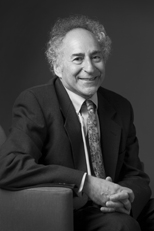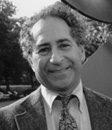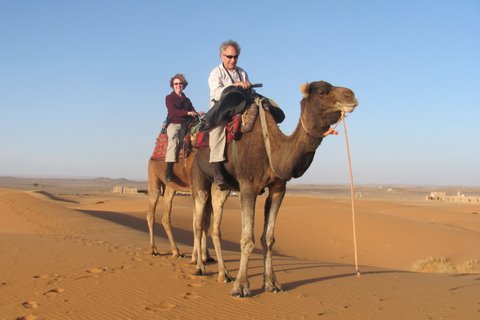Exploring Morocco and Tunisia in December 2010 as the Mid-East Revolutions Begin
"Exploring Morocco and Tunisia in December 2010 as the Mid-East Revolutions Begin: The Magic of Morocco and Tunisia," with photographs by Marcia Jacobson, The Syrause Post-Standard Sunday STARS Magazine, Feb. 27, 2011, 13-14.
Captain Renault (Claude Raines) –And what in heaven's name brought you to Casablanca?
Rick (Humphrey Bogart): My health. I came to Casablanca for the waters.
Captain Renault-The waters? What waters? We're in the desert.
Rick: I was misinformed. (Casablanca, 1942)
In my storehouse of travel memories from eleven days in Morocco and five in Tunisia: Islamic architecture decorated from floor to ceiling with gorgeous tiles, detailed woodwork, and elaborate plaster lattice work; Roman mosaics and examples of Roman architecture and ingenuity; stunning scenery with mountain, desert and ocean views; winding paths through medinas with tiny shops exhibiting food, clothes, and craft skills and patterns dating back hundreds of years; the remnants of a thriving Jewish culture and spring weather.
Arriving on a Royal Air Morac flight from New York at six on a foggy morning, how could I not remember that the World War II film Casablanca ended in physical fog but with moral clarity? Except for a tour of Egypt, my wife Marcia Jacobson and I had never been to North Africa, and Morocco if not Tunisia had been on our list for a while.
Morocco in Brief
A French protectorate between 1912 and 1956, the kingdom of Morocco is country in transition. Its cities contain narrow winding medieval streets in walled medinas with residents dressed in traditional garb and urban poverty. Yet Morocco also has Casablanca-- its chief port and largest city as well as its economic and industrial capital, the developing port of Rabat, and an excellent road infrastructure.
Outside its cities Morocco relies on agriculture and, notwithstanding the Sahara Desert in the South, Morocco is much greener than we had imagined. In the less developed parts of the South one sees nomads and small Berber villages and a good deal of poverty.
With its proximity to Western Europe and a less dogmatic form of Islam than some other Moslem countries as well as a tradition--not without blemish--of tolerance and stability, Northern Morocco has become a magnet for international investment. The abundance of industrial cranes along the river between Rabat and its sister city, Sale, reminded me of Shanghai eight years ago. Morocco is a developing country but not without high unemployment. We saw many men sitting around during the workday. In the cities, however, the king puts young people to work on menial tasks and France's call centers provide additional employment.
The current King Mohammed VI has taken a commoner for his only wife and is highly regarded by most of the populace. He has the final say on laws but works with his Prime Minister and elected Parliament. If I may summarize one African intellectual: While many African countries often have aspects of nascent democracies, these countries do not meet Western concepts of freedom.
From City to Desert and Back Again:
I had arranged the entire Morocco-Tunisia trip with Experience It! Tours, with the understanding that I would book most of my hotels. For our eleven days in Morocco, we had a wonderful driver named Youssef Abdelmoula who took care of every need and arranged local guides in most places. Smart, well-organized, helpful and reasonably competent in English--when necessary I reverted to my New York accented French-- he made the trip a joy.
In both countries, it helped a great deal that I speak a little French and can read it French reasonably well. Many museums have descriptions only in French. In the South of Morocco, one is more likely to find people who speak Arabic and Berber rather than French.
Islamic art does not represent human or animal forms. The most important site in Casablanca is the sumptuously decorated Hassan II Mosque; the third largest mosque in the world (according to some but not all sources) with the tallest minaret, it was completed in 1993 and stunningly overlooks the Atlantic Ocean. Except for Hassan II, Moroccan law does not permit non-Moslems in mosques.
While some tourists skip Rabat, we enjoyed the archeological museum, the Chellah necropolis--including the plethora of storks nesting there-- the Kasbah, and the elegant Mausoleum of King Mohammed V.
We enjoyed a (surprisingly to us) green scenic drive often among rolling hills with attractive views from Rabat to Fez. We stopped at Meknes, Morocco's fifth largest city and the center of an important agricultural area, where we saw Mausoleum of Moulay Ismail who ruled from 1672-1727 and is a great figure in Morocco history, the second in the current Alaouite dynasty. We then went to nearby Volubilis, a partially excavated and partially reconstructed but impressive Roman city with well-preserved mosaics; Volubilis is situated in a stunning landscape.
A highlight of Fez was the Medina (the largest in world) in which we saw the beautiful Bou Inania medersa—a Moslem school-- as well as food and clothing stalls, a large tannery operating according to practices dating back centuries, and skilled metal workers.
We drove 7 hours and about 280 miles from Fez through the mid-Atlas mountains (9000 feet at their peak) to Erfourd in Southern Morocco. We saw Berber nomads and Berber villages. While many of the Berber children are not in school, more are being educated than in the past, and we met a Berber university student who is studying to be a marine biologist.
|
An unforgettable adventure was a dromedary ride in the desert to a high dune to see the sunset followed by an overnight bivouac in a Berber tent. Notwithstanding a fine sunrise and some nice meals prepared exclusively for us as well as our own evening entertainment, we found the tent experience a tad rough without a shower or flashlights and with little electricity; because we had our own tent, this was supposedly the "deluxe tent experience." Blowing sand also damaged our cameras, and disposal cameras would have been a better choice.
After next spending a night in Ouarzazate where we visited a movie studio where major films have been made and saw some elaborate sets, we took a beautiful scenic drive through the Atlas Mountains to Marrakech. With hairpin curves and rapid drops, the drive was marked by juxtaposition of colors various reds, browns, whites (snow), and greens.
We enjoyed our days in Marrakech, in part because of our wonderful stay at Raid Kniza, which was located within Medina, with the souk outside our door. A riad is a traditional Moroccan house or palace with an interior courtyard but some have been converted into small inns.
Marrakech highlights are the Saadian Tombs with gorgeous plaster latticework and floral tiles, the equally impressive Palais Bahai, and Maison de la Photographie as well as the Majorelle Garden, featuring various forms of cactus. Within the garden is a stunning museum of former resident Yves St. Laurent's gorgeous multi-colored clothing designs that will appeal even to those who eschew fashion.
|
Moroccan Food:
Discovering the delightful and imaginative cuisine was an added pleasure. A tajine is a delicious stew named after a special clay pot in which meat or poultry or fish is slow-cooked with vegetables and fruits. Pastilla is a delicious pastry made with crepe or baklava like dough and chicken, pigeon, or fish. Fresh orange juice is as good I have ever had. Sweet mint tea after meals is an enjoyable traditional touch.
Departure:
As I left Morocco for Tunisia, I recalled Bogart's last words in Casablanca—a wonderful film shot in Hollywood--and one that plays fast and loose with historical facts: "This is the beginning of a beautiful friendship."
Five Days in Tunisia
The northernmost African country with a population of between 10 and 11 million and nominally a republic, Tunisia is an autocracy that has been ruled by two men—Habib Bourguiba (1957-87), the leader of the Independence Movement ending the French protectorate which dated from 1881 and since then Zine El Abidine Ben Ali, who came to power in something of a bloodless coup in which Bourguiba was declared incapacitated. The Internet and international TV stations like CNN are censored. Thus, while in Tunisia one cannot access critical stories or the Tunisia Wikepedia entry. On CNN, the speakers' mouths are not in sync with their words because the words lag behind the transmission of images and so can be blocked. Human rights activists, journalists, and outspoken opposition figures are treated harshly and often imprisoned. Under Ben Ali, what matters is not who votes but who counts the votes and most bad news is suppressed.
The ancient Tunisia sites we most enjoy enjoyed were the Bardo museum with its world class Roman mosaics, the Punic (or Carthaginian) and Roman sites at Byrsa hill in the current city of Carthage as well as other Carthage sites: the Roman Aqueducts, the Antonine baths the Roman amphitheatre, the Punic Port and the Tophet where Punic people may have sacrificed children. We missed Dougga, an important Roman ruin, instead going to the Roman ruins at Thuburbo Majus.
Another major stop was Kairouan, a Moslem center that has the fourth most important Moslem mosque (after Medina, Mecca, and Al-Aqsa, the latter in Jerusalem) and is known for Berber carpets. In contrast to the mosaic art in Morocco by Moors who came from Spain, much of Tunisian Islamic art consists of elaborate painted tiles.
We also saw Kairouan's historic mausoleum and reservoirs. Before spending a night in coastal Hammamet, the garden spot of Tunisia marked by beautiful flowers and winding lanes, we went to Sousse—a beach resort and Tunisia's third largest city-- and saw Christian catacombs. On balance, the scenery is less lush that Morocco's green north. Although we didn't quite get to the northern tip of Africa, we saw a beautiful seascape setting as we approached Cap Bon along the ocean, including the harbor at El-Kantaoui. Staying at a Hammamet hotel overlooking the ocean, we saw a marvelous sunset and sunrise over the water.
Jewish Life in Morocco and Tunisia
American visitors to Morocco are comparatively few compared to those from closer European countries, especially France and Italy. Because there was a great Jewish presence in Morocco, numbering upwards of 250,000-265,000 before the creation of Israel in 1948, a reasonably high percentage of American visitors are Jews, especially those with a Sephardic background—that is Jews whose families once lived in Spain.
Only a remnant of Moroccan and Tunisian Jews remain, perhaps 5000-7000 in Morocco and 1500 or so in Tunisia. Why did the Moroccan and Tunisia Jews leave? Some reasons: the Holocaust, especially in Tunisia which the Nazis occupied in 1942-43; the subsequent appeal of Israel established in 1948; the end of French Protectorate; the dissolution of colonial French Algeria and resettlement of its Algerian Jews in France; the rise of revolutionary and anti-Semitic regimes in Algeria and Libya and to some extent Tunisia; the aftermath of the 1967 six day War, and—what is rarely mentioned—some pogroms in Morocco in 1948-9. Once the Jews lost a critical mass and once most friends and relatives left, there was more reason to depart to larger communities in France, Canada, America and especially Israel. To be sure, greater economic opportunity elsewhere also play a role in Jewish emigration, but this was not the primary reason.
Casablanca has an extensive if elegiac Jewish museum that recalls the once great Jewish presence. The museum omits all reference to emigration or the Holocaust. While most of the synagogues in Morocco (and Tunisia) are museums, Jewish sites in both countries are guarded by police to prevent vandalism or worse. We visited an active synagogue in Rabat which has a twice a day minyan of 10-12 Jews and 22-25 for Sabbath, but almost all of the Jews are elderly and there are no longer Bar Mitzvahs or weddings. In several cities, including Rabat, Meknes, Fez, Marrakech, we visited mellahs—old Jewish neighborhoods now without almost any Jews---and Jewish cemeteries.
In Tunisia, we again saw the remnants of the once thriving Jewish culture. Because of a fatal explosion in 2002 at the ancient synagogue on the Tunisian island of Djerba, the Jewish sites were carefully guarded. We saw the beautiful large synagogue in Tunis, which while still kept active by a few handfuls of older people, speaks of a dying community. In Sousse, we met a Jewish sweet shop owner and his son and then visited a tiny synagogue that had many torahs because the other four synagogues had closed.
Be advised that in both Morocco and Tunisia most guides don't know much about Jewish history and practices and present a much-edited version of why Jews departed. Visiting synagogues is a moving experience, but the hosts—Moslem or Jew-- expect a generous tip, which usually ends up in private pockets.
IF YOU GO:
--The entire Air Royal Maroc ticket cost about $1450, including the round trip to Tunisia from Casablanca. Recommended for Morocco tour: http://www.experienceittours.com/ and for a private tour ask that Youssef be your driver.
--The owners of Experience It! have a new satellite company in Tunisia that proved hopeless in terms of providing us with a safe car, a friendly driver, and--until we complained--competent guides who spoke English. Clearly they need to replace this company.
-- Tunisia does not have a tourist infrastructure comparable to Morocco's; nor are its hotels of the same quality.
--On the whole this was a great trip to take during northeast winter. We had all sunny days and temperatures in the 60s during the days and low fifties at night.
--Be aware that in both countries people expect a small tip whether they do a real service or not, and you will need decide who gets what.
Morocco Lodging:
--Rabat: Villa Mandarine (19 Rue Ouled Bousbaa-Souissi): boutique hotel with cool if not rude reception; quite respectable dinner (cannelloni stuffed with lamb, raisin, apricots); manicured gardens; excellent breakfast.
--Fez: Hotel Sofitel Palais Jamail (Bab Guissa, 30000 Fes): elegant international hotel-- with wonderful views of the medina-- refurbished on site of palace dating back to 1879.
--Marrakech: Riad Kniza (Derb L' hotel, #34 Bar Doukkla, 4008 Marrakech-Medina): world class hospitality, service, luxurious accommodations; outstanding breakfasts included; spectacularly elaborate multi course with wine at $65 per person.
--Efroud: Xaluca Kasbah hotel: aimed at tourist groups (xaluca.com/en/la_agencia_xaluca_tours); Berber quartet of instruments, singers, and dancers; a camel arriving in the dining room where a mediocre buffet was served; not much English spoken here and not very attentive staff. Xaluca also owns the rather primitive tent camp at which we stayed.
-- Ouarzazate: Berber Palace, (Quartier Mansour Eddahbi, Ouarzazate 45000): nice rooms; tourist buffet with crepes a highlight.
Morocco Restaurants
--Rabat: Restaurant Saadi (81 Bis, Av Alla1 Ben Abdellah-Rabat; tel: 037 70 99 03); terrific Tijanes; local spot with good value; indifferent service.
--Fez: Ste. Socetak at Riad El Yacout (9 Derb Batha, Fez Medina; tel: 212 35 74 00 20): wonderful tajines and dramatic setting.
-- Marrakech: Chez Lamine, Hadj Mustapha N' Guyer (19 Residence Yassmine Rue Ibn Aicha Mar; tel: 05.24.43.11.64): excellent and inexpensive local food; splendid pastilla and tasty meat tajine with almonds and prunes.
-- Marrakech: Rotisserie de la Paix (68 Rue de Yougoslavie; tel: 5 24 43 22 72): French Moroccan cuisine; barbecue, outdoor garden in warmer months; excellent lamb tajine.
Tunis Food and Lodging
We ate most of our meals in hotels and found the food considerably less interesting than Morocco. The Sheraton Tunis Hotel (Avenue de la Lique Arabe, B.P. 345, Tunis Carthage Cedex, 1080) is considered the best hotel in Tunis, but neither its service nor food—especially its mediocre Tunisian restaurant--are up to international five star standards.
Be aware that in Tunisia four or five stars may mean three stars by international standards. Thus the Kasbah hotel in Kairouan was attractive but the dinner and breakfast buffet were nothing special with extra charges for fresh juice and brewed coffee; the hotel even had an extra charge for the use of room safes. Le Sultan Hotel (Route Touristique, Hammamet 8050) had a nice dinner buffet and most rooms offer great sunrise and sunset ocean views.


 Sahara Desert, camel ride
Sahara Desert, camel ride Moroccan cooking
Moroccan cooking